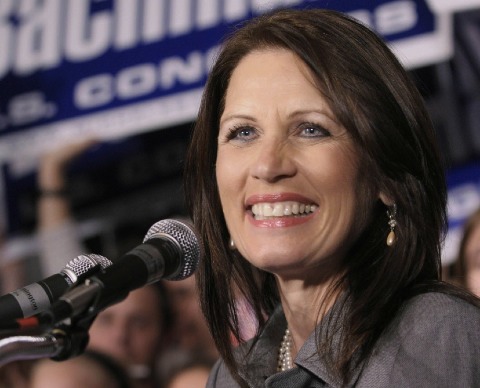Photo: Associated Press
If it seems politicians like Michele Bachmann (above), Rick Santorum and Rick Perry are from some alternate reality that’s staunchly opposed to gay marriage, a woman’s right to choose, or ensuring that the poor and working class have access to the political process, it’s because they are. Over at Alternet, Theo Anderson explains why folks on the extreme right of the political spectrum see the world–particularly what America means and stands for–very differently that their progressive brethren. He frames it like this:
Beginning with our first experiments in self-government, the dissonance between our ideals and our institutional practices–especially the tolerance and extension of slavery–created tensions that finally tore us apart.
The South’s alternative vision of the good society was defeated in the Civil War, and our 20th-century history can be told as a narrative of halting progress toward greater tolerance and equality. The major plot points include regulations on corporations in the early 1900s; women’s suffrage in 1920; a social safety net in the New Deal; the Supreme Court’s rejection of Jim Crow laws in 1954; the civil rights and feminist movements of the 1960s; the gay rights victories since the 1970s.
This narrative suggests that our democratic experiment is working, albeit slowly. If we have never been entirely unified in our ideals, the Civil War at least re-unified our institutions. A century and a half later, we rally around the same flag. Or so we think.
The deeper truth is disquieting. The rhetoric of Michele Bachmann, Sarah Palin and Rick Perry about the “real America” is not imagined: They and those who oppose them live in different Americas, embodying different ideals and meaning different things to their loyalists.
How we reached this impasse is a fascinating question. The answer to it raises profound doubts and questions about how–and whether–we can move forward as “one nation, indivisible.”
Read the rest of Theo Anderson’s article here.


